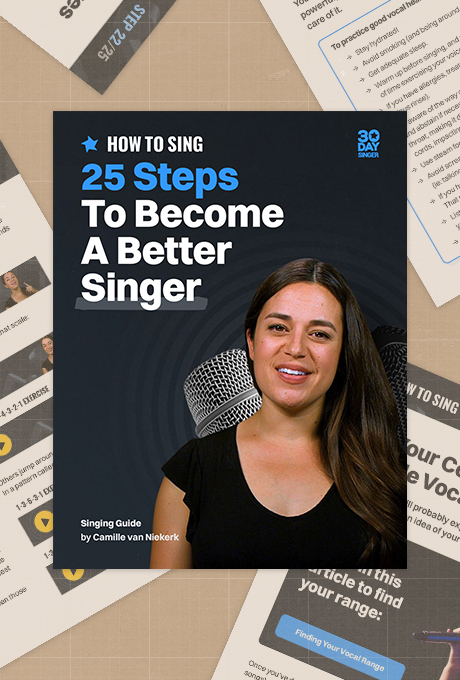How to Sing - Part 3: Pairing Breath With Sound
June 16, 2023I’m Camille, singer & voice teacher with 30 day singer, and this is How To Sing - Part 3: Pairing Breath With Sound.
You already know how to breathe, and you can’t speak or sing without breath - so why do we need to learn about breathing at all?
Well, the demands of singing are greater than that of speaking. For one thing, singing requires you to use one breath for a long time. Singing also requires a steady, smooth flow of air, which is easy when you’re just exhaling, but can feel difficult when you’re also focused on singing different pitches and lyrics. Sometimes, you need more air pressure or less to achieve a desired sound. For beginners: we want to just become aware of our airflow, and develop some control!
As for your inhale, don’t worry about taking in a huge volume of air. Just stand or sit up tall with a proud chest and relaxed shoulders, and soften your belly so those muscles can move freely. Inhale and exhale through your nose, feeling your ribcage and belly expand, and then contract. Keep that same relaxation as you breathe in and out through your mouth.
Now exhale on a strong hiss and feel your abdominal muscles engage. You may feel your low belly working, below your belly button, or the muscles between your ribs. Ideally, we do NOT want your upper belly hardening or crunching inward. Don’t force or use maximum effort; just feel what naturally happens.
Now take that hiss and close to a hum, so you can feel those same muscles working when you make sound.
With more of a “pulse” now, we’ll alternate hissing twice and humming twice. Sing on any pitch that’s comfortable. I’ll demonstrate on C4, so you can be here with me or one octave lower on C3.
What we’ve done so far is paired breath to sound, meaning when we start to sing, our abdominal muscles naturally and gently engage. The goal is to keep that feeling of engagement in your warmup, and carry it into your song work as well; ideally, you’re engaging through the end of a phrase, so you don’t lose energy or “fizzle out." I find it helpful to use a movement that matches the duration of the phrase.
In the next lesson of this series, we’ll find your falsetto or head voice function!
How To Sing - Part 1: Matching Pitch - https://youtu.be/-PExRMSit_I
How To Sing - Part 2: Speaking On Pitch - https://youtu.be/QCacgX2b4Cs
0:00 - Intro
1:12 - Inhale/Exhale
2:37 - Hiss
3:44 - Hum
4:26 - Pulse
5:37 - Engagement
6:39 - Outro


